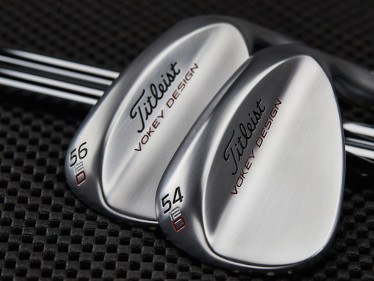

56 degree golf wedge professional#
Professional golfers use 56 and 60-degree wedges, depending on the shot they try to make.
56 degree golf wedge pro#
It’s only suitable for the seasoned pro and not recommended for high handicappers, except if you want to suffer and make a mishmash out of your shot. The 60-degree wedge, on the other hand, is not ideal for all levels of players. It is effortless to control if you use it properly. It’s also great for short games, allowing you to slip the ball from sand traps easily. It is possible to land in a sand bunker at any time. Whether you’re a seasoned golfer or a high handicapper, the 56-degree wedge performs well. The high loft of the 60-degree wedge allows for a higher trajectory and more spin, which can help golfers stop the ball quickly on the green. It is perfect for chip and pitch shots from around 50 yards or less. Its four additional degrees help lift the ball high into the air. On the other hand, the 60-degree wedge is considered a specialist wedge and is used for short-range shots around the green. The 56-degree wedge can also be used for pitch shots from around 100 yards away and chip shots around the green. It is typically used for sand shots, as it can quickly get the ball out of a bunker and onto the green. It provides a soft landing that rolls a few yards when it hits the ground. The 56-degree wedge is one of the most versatile wedges in a golfer’s bag. The 60-degree wedge also has a shorter shaft length, which makes it easier to control and provides more precision in short-range shots. The primary difference between the 56 and 60-degree wedges is the degree of loft.Ī 60-degree wedge has a higher degree of loft than a 56-degree wedge, which can affect the trajectory and spin of the ball.įurthermore, there’s also a difference in the shaft length. It launches the ball high up like the sand wedge but has a shot roll so the ball can quickly stop within the green. The lob wedge, also called the 60-degree wedge, is the shortest-hitting club in golf.

The 56-degree wedge is among the wedge capable of providing ball height in minimal time, resulting in a sloppy landing. Let’s expatriate on the attributes of both wedges degrees. The lob wedges, on the other hand, are only ideal for better players. Generally, the sand wedges(54-56 degrees) are more versatile and cater to a wide range of golfers. It provides enough distance while offering incredible consistency when chipping onto the green. The 56-wedge degree is most beneficial to average golfers. The regular practice for most players is to stock the complete set of irons before adding a sand wedge and a 60-degree wedge. The 60-degree wedge, on the other hand, is usually considered a lob wedge and is used for shorter approach shots and chip shots around the green. It is often used for bunker and pitch shots from around 100 yards away. The 56-degree wedge is typically considered a sand wedge.

The 56 and 60-degree wedges are the most common, each with unique strengths and weaknesses. The degree of loft on a wedge can affect the trajectory and distance of the ball when it is hit. Golf wedges are designed with varying degrees of loft, which refers to the angle between the clubface and the shaft. This article will explore the differences between these two wedges, their uses, pros and cons, and which one may be best for you. However, both are ideal for average golfers, and some pro golfers combine them. The 56-degree wedge falls in the sand wedges category, while the 60-degree wedge is a lob wedge. Wedges come in various lofts the two most commonly used are the 56 and 60-degree wedges. Wedges are some of the essential golf clubs, as they play a critical role in short-range shots. Golfers of all levels know the importance of having the right clubs in their bags to achieve the best results on the course.


 0 kommentar(er)
0 kommentar(er)
